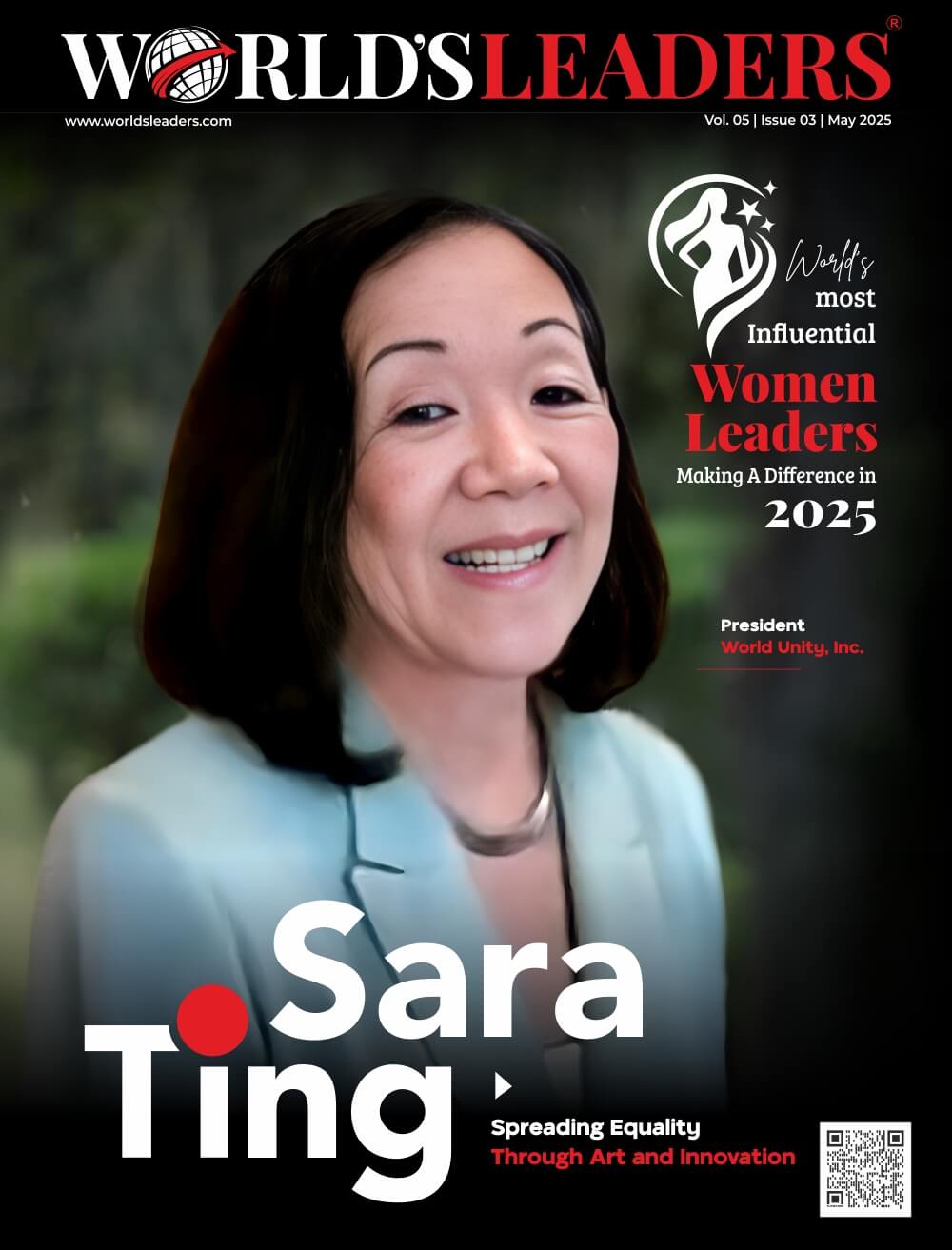Seeing that a structural approach to guiding others can vary greatly depending on the organization’s goal, Vijay Singh, Director and Country Head at steel producer ISPAT-China, personally believes in respecting the team by listening to their ideas and guiding them to achieve their full potential. “As humans, we work better together with empathy, kindness, and thoughtfulness,“ says Vijay. Hence, he prefers a more democratic leadership philosophy, especially for a steel and mining-related industry where teamwork is essential.
China is the world’s largest producer of steel, as well as the world’s largest consumer. Any downturn in the Chinese economy will have a significant influence on the global steel industry, given its dominant market position and the vast volumes of steel used across various sectors of the economy. Vijay moved from India to China in 2002, when the country was very different. Few people were able to communicate in English. He found it difficult to communicate with direct end users, customers, and vendors. Because Hong Kong and Singapore were trade hubs for business dealings, he flew to these two cities frequently to attend meetings. Now, China is a prominent destination and hosts the majority of such business gatherings, making his job and that of his team considerably easier.
China is now the world’s largest steel producer, with an annual capacity of 940 million tonnes, accounting for 65 percent of global steel production. Because of government-announced big infrastructure projects and investment, China’s steel sector grew significantly. As a result, China owns over half of the world’s top 20 steelmakers. Many Chinese companies—the vast majority of which are integrated commodity steel producers—are still building and upgrading their facilities. China is also interested in cross-regional mergers and acquisitions in order to reduce output and close down outmoded capacity with target to reduce carbon emission & there will be more stringent regulations on carbon emissions in the near future. The costs of short-process steelmaking when it comes to environmental protection measures are going to be lower than long-process steelmaking. Decarbonizing the iron and steel sector will therefore play an important role in achieving the goal of carbon neutrality. An integrated approach are being developed that combined a computable general equilibrium model and a bottom-up technology-selection module. System-wide cross-sector decarbonization can help achieve climate targets at lower costs through flexible technology combinations and avoid carbon leakage into upstream energy-supply sectors.
Chinese steelmakers are also looking for methods to expand their value chain and market presence in Europe & other Asian countries, as well as acquire technology that has aided Europe’s transition to high-value-added products. Despite China’s attempts to reduce steel production in order to reduce pollution, some facilities are increasing capacity, and China’s steel output is increasing. This growth in output has also helped to maintain demand for high-grade iron ore, which is a raw material for steel and a driver of its cost.
India’s economic path differs from China’s because its economy is less controlled and steel plays a different role in the entire economy. Vijay expects India to continue its progress in the market. Driven by infrastructure and urbanization, steel demand in India is also expected to grow in the near term and will touch 122 million tonnes by 2022. Combined with slower capacity growth in the past few years, the Indian domestic industry can expect to see improved capacity utilization, rising from 80% to 90% in 2021.
Vijay asserts, “All in all, we expect India to continue its incremental steel demand growth. Its political and economic situation makes it unlikely that steel will follow a growth path similar to China’s boom.“
Stepping into China
ISPAT Group established a presence in China in year 2002 to market all steel products and Ferro Chrome, as well as to get met coke for its steel factory and sourcing of all equipment and machinery for expansion of steel plant and its auxiliary unit. China was the world’s largest importer of steel at the time, which was used in all of the forthcoming and quickly increasing urban and industrial infrastructure projects, as well as port and highway expansion. China’s GDP was increasing in double digits at the time, with fixed asset investment exceeding 20%.
Raw material necessary to continuously feed ISPAT Group’s cold rolling steel mill to function at 100% capacity was bottlenecked during the beginning stages since it used to import HR coils to meet the high-end market segment. As a result, the promoter decides to invest and expand on backward integration by setting up steel manufacturing and producing hot rolled coils with the latest technology of the Thin Slab caster, which was the first to be commissioned in India, as well as producing the thinnest gauge hot rolled coils in India for the first time. According to Vijay, the company was commissioned to set up a factory to make pre-painted steel coils for the first time in India at this time.
From 2001 through the 2008 Olympic Games in China, the Chinese government announced numerous projects involving various types of steel, ranging from low-end to high-end. China’s steel production was limited to 230 million tonnes in the early 2002-2003 era, forcing it to purchase steel from all over the world. During that period, China had an open policy to import steel from all over to ensure timely completion of all infrastructure projects.
Values That Made a Success Path in a Foreign Country
Value connections and relationships, which are known as Guanxi in Chinese language, are very important to leading business in China. “A single conversation across the table with a wise man is worth ten years of book study,” Vijay says.
According to Vijay, it is quite important to work and get confidence with the Chinese to understand their working style, management, and approach to doing business. The Chinese negotiation framework means understanding and accommodating the Chinese-style approach in order to craft a strategic plan that works on a local level.
Vijay mentions, “Chinese negotiation framework means understanding and accommodating the Chinese-style approach in order to craft a strategic plan that works on a local level.” Preparation for negotiations is also to gain insight into the negotiating partner’s situation, intent, and capabilities, and to identify areas of focus for discussions. He further adds that this takes time and effort, but thorough preparation will help to decide the best way to approach the table, increasing the likelihood of a successful negotiation and sustainable business arrangement.
Analysing Market Conditions
According to Vijay, lack of knowledge regarding Chinese industrial policy, government rules, and relevant government and corporate stakeholders at the national, provincial, and local levels, might result in an improper strategic approach to negotiations. If, for example, foreign corporate goals contradict with local directions, efforts to reach an agreement with the Chinese partner may be delayed or halted without the foreign company’s realising it. If they have the proper knowledge about the business context, companies can position themselves to get the greatest potential outcome.
“It is very important to know your customer, and we have a KYC format that ensures you get the right Chinese companies for establishing a new business or starting a new business, and we must attempt to find the direct end users or manufacturers by visiting their plant and previous business records,” says Vijay. A thorough audit and some feedback from other organisations will also help to find out the customer’s behaviour.
Vijay has taken advantage of the fact that China is the world’s largest market for purchasing and selling steel commodities and raw materials for steel products by exporting and importing materials from China.
When it came to marketing, ISPAT Group focused more on China when prices were rising or peaking, and less on China when the market mood was bad, because the possibilities of getting agreements were slim. ISPAT Group was able to optimise its profits in this fashion.
Vijay assessed vendors to ensure product quality, timely delivery, and pricing negotiations on the procurement side. He used to go to factories and facilities to look for and investigate a variety of suppliers, as well as verify their track record and performance. With the above working approach, he was able to optimise business dealings with the Chinese by ensuring profitability and developing new customers and suppliers for future business.
30 years of Leadership
Vijay believes that sustainability is becoming an increasingly critical issue for many industries in the business sector, and that sustainable business practises are becoming mandatory for business owners, leaders, and administrators. To make effective top-down decisions, he believes that training and skills are required to impact change throughout an organisation. Leaders are, without a doubt, the most crucial link in the chain. He says, “Owners and executives have the intellectual acumen to identify the most effective sustainability strategies and initiatives, as well as the power to change policy and spur innovation.”
People view sustainability as a plus, and companies with green values are eager to showcase them because of that fact. Going green shows the world you care about more than just making money. He asserts, “You can use this to your advantage when marketing your business and developing your brand identity.”
According to Vijay, marketing has taken a new route, one centred on honesty, relationship development, and openness. The capacity to connect emotionally and mentally is what gives promotional programmes their power. It is no secret that strong relational bonds are the lifeblood of every firm.
The Pandemic Effect and the Future Vision for the Next 5 Years
This pandemic has affected all as raw material prices have gone up and, parallelly, freight is moving up every week. As a result, the supply chain will be disrupted, leading to even higher prices in the coming months. Vijay says, “It is obvious this pandemic will have some effect till 2022, so we expect many uncertainties on the price of raw material, freight cost, and delayed shipment considering quarantine factor etc.”
Vijay believes that businesses must plan ahead of time and educate all customers in order to provide adequate lead time for production and shipment, as well as to be more aware of price movement every month before booking orders.





